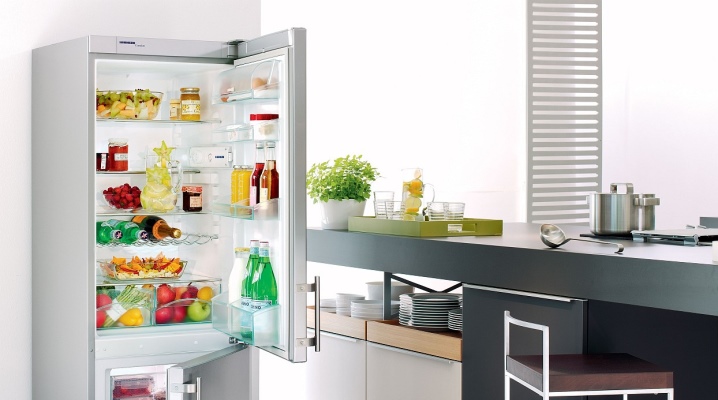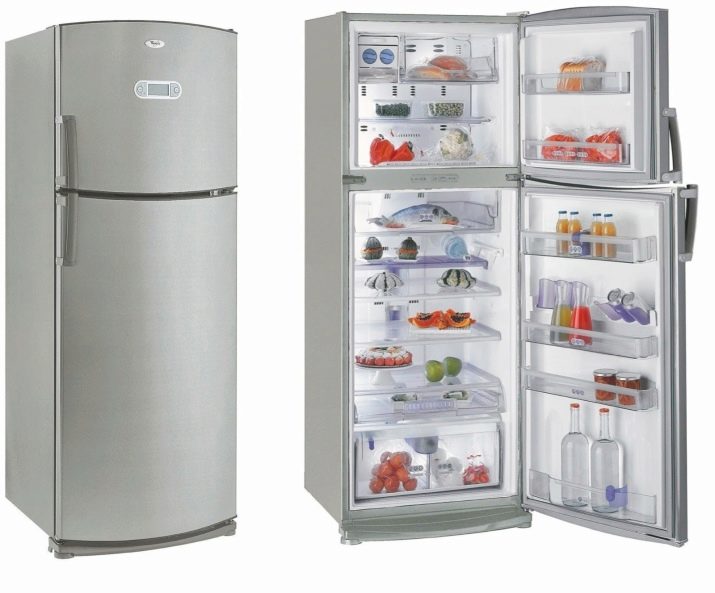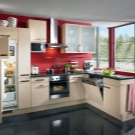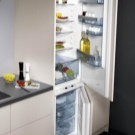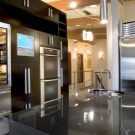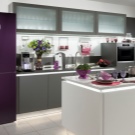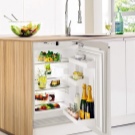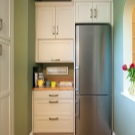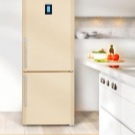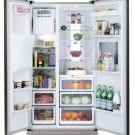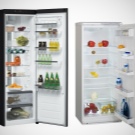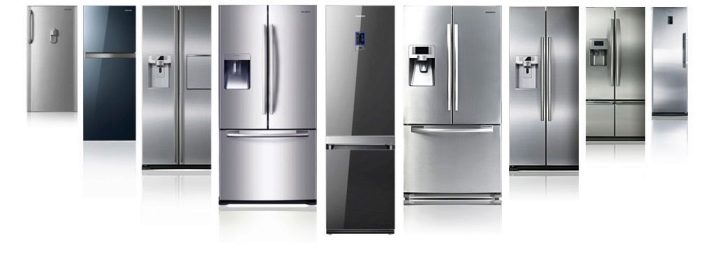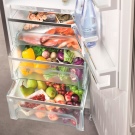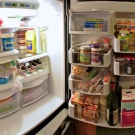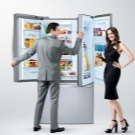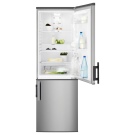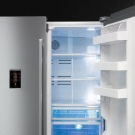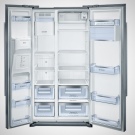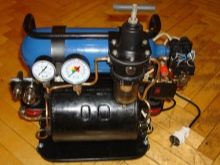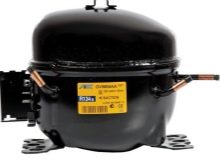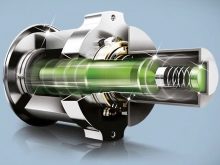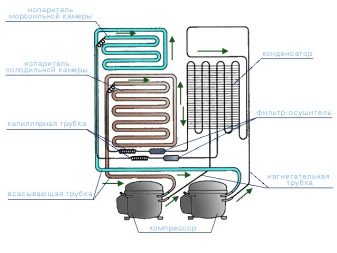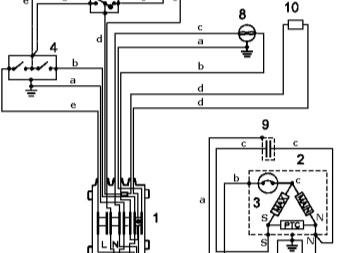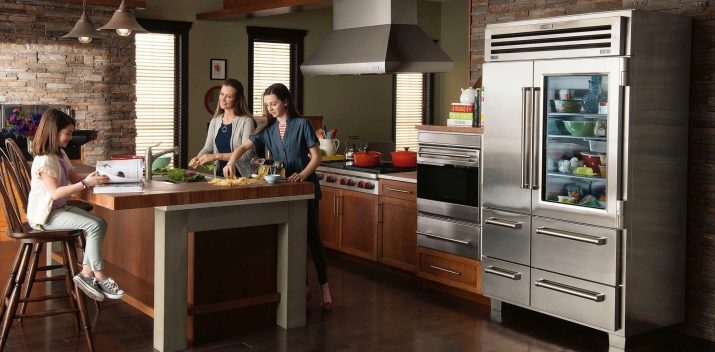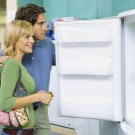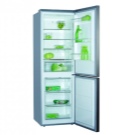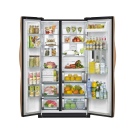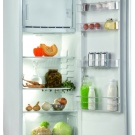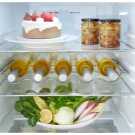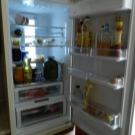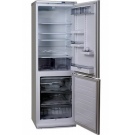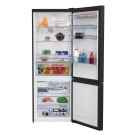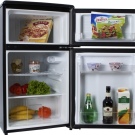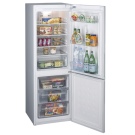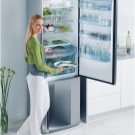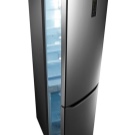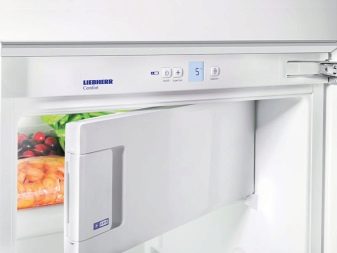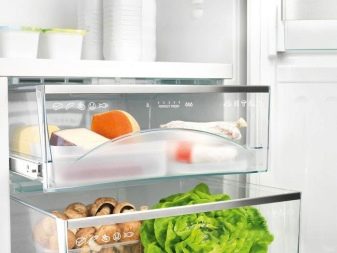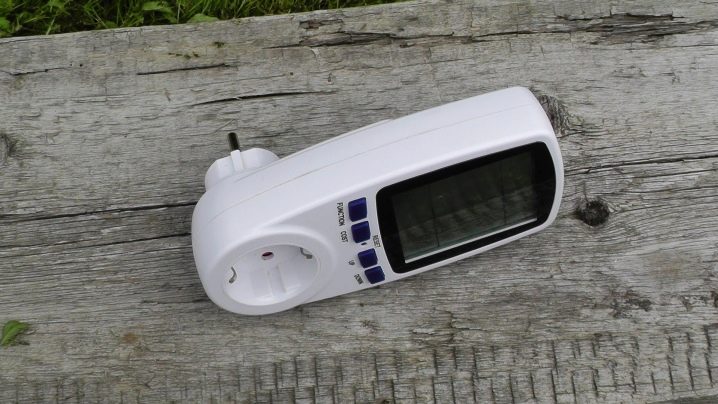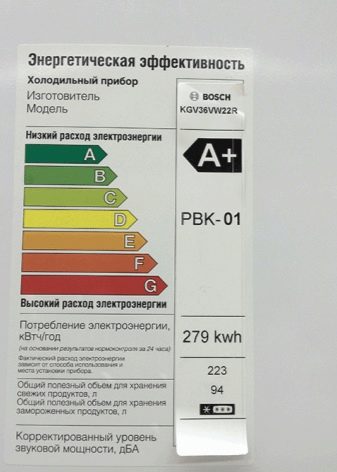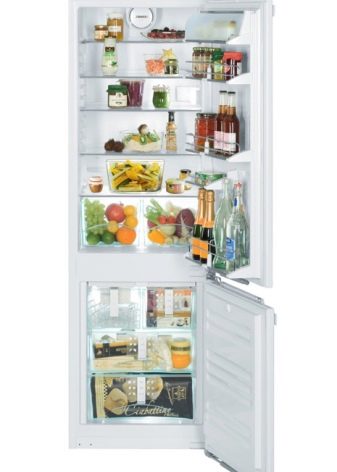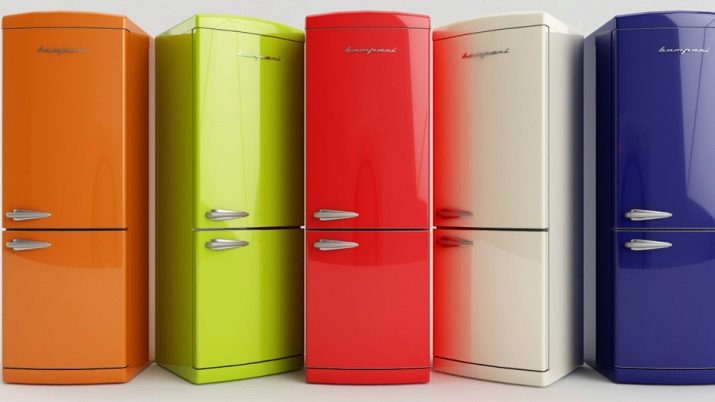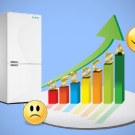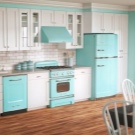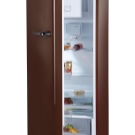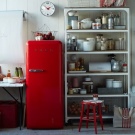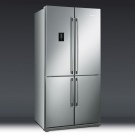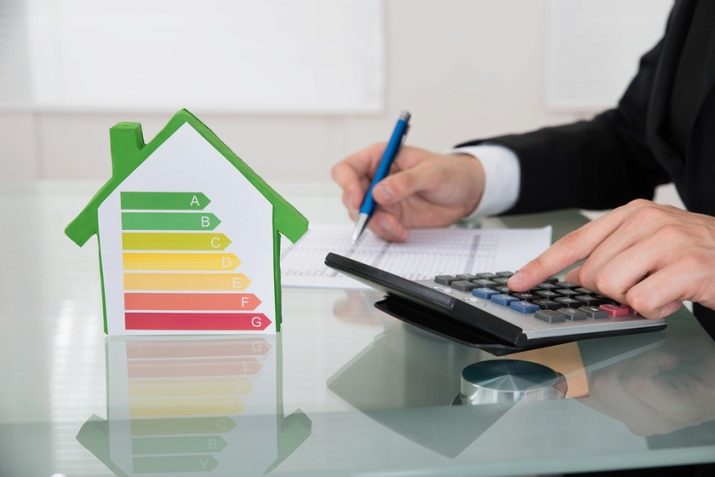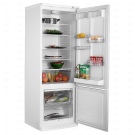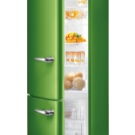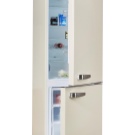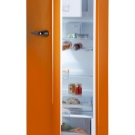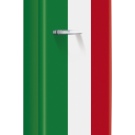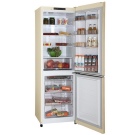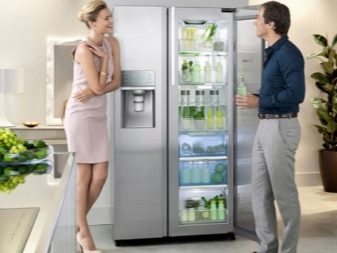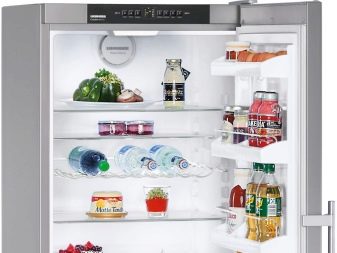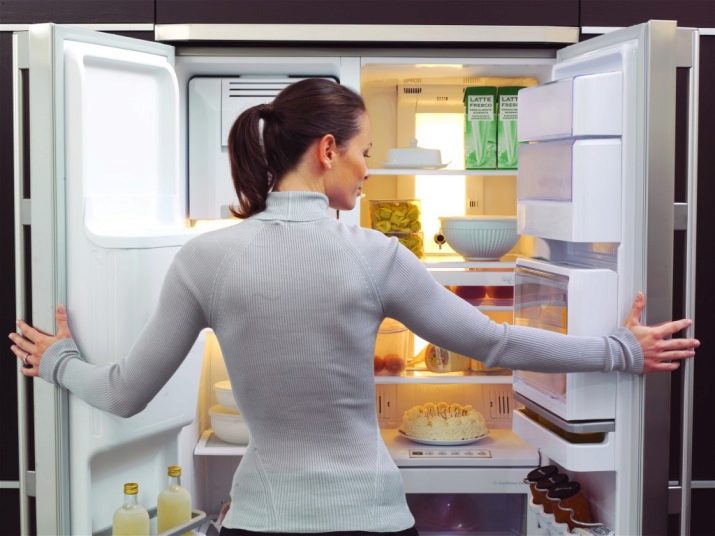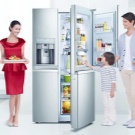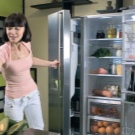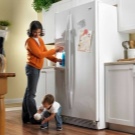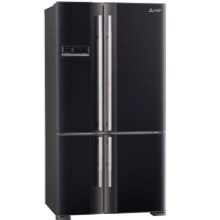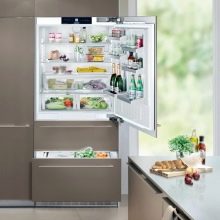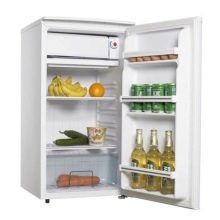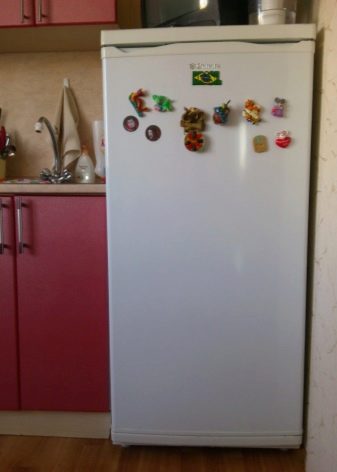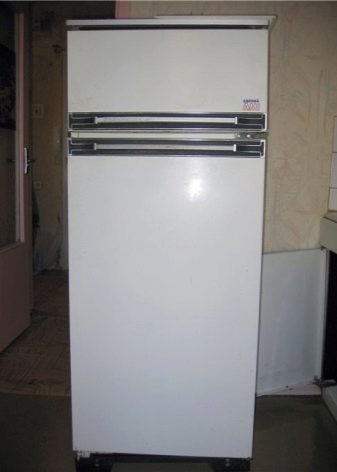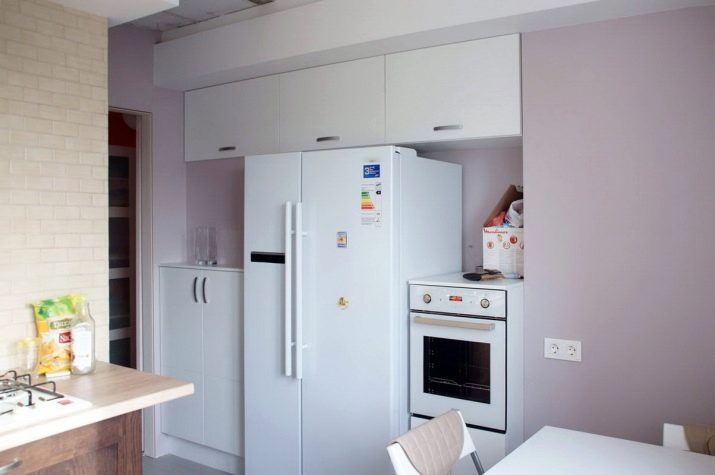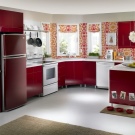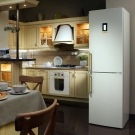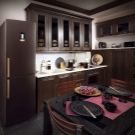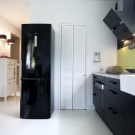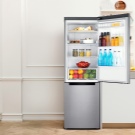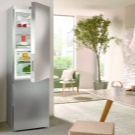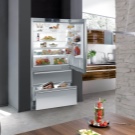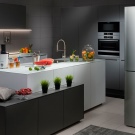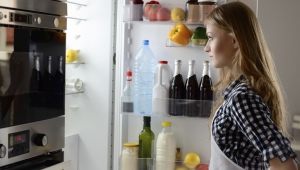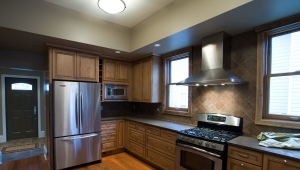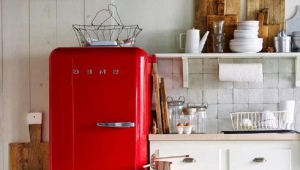Refrigerator power
The power of the refrigerator plays an important role in the selection of household refrigeration equipment for the home. Every economical owner knows that the economy class depends on how much the annual operation of the refrigerator will cost. In addition, power determines freezing rate, overall productivity, energy efficiency and energy consumption.
Power consumption - what is it?
It is difficult to understand which parameter is being discussed, if you do not understand the terminology. Often, consultants in a store use the definition of “energy consumption”, meaning that it is a priori understandable to the buyer. However, not everyone understands these subtleties of household appliances. It is especially difficult for housewives, who rather appreciate the useful volume, the availability of accessories and the appearance of the device, losing sight of no less important details. Energy consumption is a physical quantity that reflects the amount of energy consumed by a household appliance for work. The figure in the receipt of payment for electricity directly depends on this amount. The higher the energy consumption level, the more expensive it will be to operate the equipment.
The level may vary depending on the mode in which the device operates at a particular moment. For example, a computer in sleep mode consumes 25 times less energy than during active use. The fridge needs a minimum amount when it is in mode. "Vacation".
What does it depend on power?
The capacity of a refrigeration unit is the amount of electricity that it consumes in the aggregate over a certain period of time. The total number consists of the following components:
- Dimensions of the refrigerator. The volume of cameras plays an important role in determining the power of the unit. So, the form factor fridge Side by side volume of 500 liters consumes 520 kW / h of energy during the year, and for the operation of the device volume of 370 liters you need about 360 kW. Large-sized equipment, by definition, requires more energy, but this does not prevent it from being sufficiently economical and belong to high energy consumption classes;
- Thermal insulation. It is necessary to protect the refrigeration compartments from the penetration of heat from the environment. The lower the thermal conductivity of insulating materials, the more reliably they keep the cold inside the chambers. Accordingly, energy consumption to maintain the temperature at the required level is reduced;
- Availability of additional functions. Each mode above the standard list requires additional efforts from the individual elements of the device. The more modes are running, the more the refrigerator consumes energy. The only mode that does not increase, but lowers the level of energy consumption - holiday mode. It helps to save energy due to the fact that it maintains a zero temperature inside the chambers during the entire time when the owners are absent;
- No Frost, Frost Free or Total Frost system. Owners of refrigerators equipped with this clever auto-freezing system, note the increased consumption of electricity during operation of the device. This is due to the fact that a pair of fans for blowing the evaporator and motors also consume energy;
- Volumes of products placed in the refrigerator. The more kilograms of products placed on the shelves of the refrigeration and freezer compartments, the more diligent the device has to produce cold, which means an increase in electricity consumption. The temperature of the food also plays a role;
- Operating conditions and time of year. Refrigeration equipment must maintain a certain temperature difference between the external environment and the internal space. More difference - more energy is needed to operate the device;
- Average heat transmission power a refrigerator during its operation;
- Compressors, Heaters and Fans Power. Each of these devices requires energy to work, and the more actively they perform their function, the more energy they need. The decisive factor is the capacity, type and number of compressors.
Compressors
There are only three types of compressors: normal, linear, inverter. Normal works on a cyclical algorithm: turn on, cool the camera to the desired temperature, turn off. At the same time energy consumption increases, and the service life decreases. Inverter immediately cools the camera, and then operates at half power, keeping the degree at the same level.It requires less energy, does not emit noise, does not require repair for a long time. Linear combines the functions and benefits of the first two types.
Economy class models are equipped with one compressor, which makes their level of energy efficiency lower than that of dual-compressor ones. This is due to the fact that when the refrigerator door is opened, the thermostat automatically sends a “switch on” signal to the compressor. There is a waste of energy on both the refrigeration and the freezer, while only one of them was open.
Elite models provide activation of only the compressor that is needed at the moment. In addition, the presence of two compressors allows you to adjust the temperature in the refrigerating and freezing compartments separately. This not only prevents wasted energy, but also contributes to better preservation of products.
When choosing a home appliance with one or two compressors, it is worth considering the freezing ability of the device.
The range of indicators is quite large - from 3 to 20 kg per day. For the average household, this figure fluctuates around 10-12 kg.Do not overestimate it and overpay for power, which is designed for large volumes. This refrigerator will waste energy in vain.
The most economical option with two compressors can be found in the premium segment. Slightly less beneficial in terms of energy saving model of class "luxury", but such devices are designed not for the average, but for "their" customers.
An important point that is worth paying attention to when choosing an economical model of the refrigerator is the defrosting system.
It is difficult to find equipment requiring manual defrosting from a modern manufacturer. A dedication of the whole day off breaking ice from the freezer is a relic of the Soviet past. Most of the new models are equipped with the No Frost auto-freeze system. It is convenient, it saves time, but it has some disadvantages. Each element of the system spends a certain amount of electricity, so the overall energy efficiency is reduced. And also the fan sometimes crackles during operation, therefore such models can be quite noisy.
Freezing power
This parameter indicates the volume of products, measured in kg, which refrigeration equipment can freeze in a twenty-four hour period.The approximate temperature is minus 18-20 degrees. The indicator is indicated on the informative label of energy efficiency and in the user manual. The manual is marked with an "X" with asterisks. The number of stars is determined by the maximum allowable amount of products.
Different models have different freezing capacities. For small models of economy class it is 8-10 kg per day, for medium and large-sized - from 15 to 30.
How to calculate?
Power is measured by a physical quantity with which everyone who has studied at school is familiar - in Watts (W). In order to determine the power consumption per year, it is necessary to calculate the amount consumed per kilowatt (kW) per day. There are several ways to determine the power of a conventional refrigerator. The simplest of them is to use a device called a multimeter. The principle of operation of the multimeter is based on the fact that it measures the performance of the refrigerator circuit during the operation of the compressors. The numerical values from the device must be multiplied by 220 (the common amount of voltage in the network, measured in Volts).
The approximate power consumption of refrigeration equipment is indicated by the manufacturer on a special sticker inside the freezer or on the outer wall, and in the user manual. The manual gives an idea of two possible options: maximum power (measured when the compressor is turned on) and nominal average power. Standard figures for maximum power are 0.3 kW per hour. This concept was introduced due to the fact that compressors function intermittently. They are activated by a signal from special sensors that monitor temperature changes inside the chambers, at which point the level of energy consumption increases dramatically.
The coefficient for the average nominal power varies in the range of 0.1-0.2 kW per hour. This is a conditional indicator of how much energy a home refrigerator needs to maintain a stable temperature when the compressors are turned off.
Energy class
Each modern manufacturer takes care of the most concise and accessible to talk about the characteristics and advantages of the equipment produced by them.On the information sticker on the door of the refrigerator there is necessarily such a parameter as “power consumption”. It is necessary so that the buyer, without unnecessary calculations and efforts, can determine which equipment will be more profitable to operate.
The class is marked with a capital Latin letter from G to A, where G is the lowest in energy efficiency. Since 2003, the classification has gradually been replenished with three more steps, and today manufacturers produce mainly models of classes А +, А ++ and А +++. At the same time, wasteful devices of class below D disappeared from production. Nominally D, E, F, G devices are present in the table, but it is difficult to find a model for sale, even among low-cost domestically produced goods.
From July 1, 2014, the table of energy consumption classes of refrigeration equipment includes not only the figures in kW / h, but also the energy efficiency index.
The most profitable are models with an index of 22, the most costly refrigerators, which are assigned an index of 150. From the point of view of efficiency, category A refrigerators are more relevant, with both pluses and without.The number of pluses means that the models with such markings are distinguished by a high level of energy saving - from 127 kW / h. They also belong to the group of devices with a low energy efficiency index. The level of energy consumption - from 20% to 50%.
Equipment with a power tag B is also quite popular. The difference between classes A and B is an increased level of power consumption. The energy efficiency index B ranges from 55-75%, the average power in kWh hours per year is 350. Class C representatives are significantly inferior to A and B in all respects, but the 75-95% index makes them more profitable than models of the next order. Class D refrigerators are indexed 150, which is equivalent to 95-110%. Classes E, F, G are the cheapest in terms of cost, but they are less economical to operate. Due to the fact that they contain a high level of power consumption, they are practically not produced.
Climate class
This parameter is relevant for residents of regions with large maximum temperatures in the summer and winter season. In total there are 4 classes: 2 for temperate climate, 2 for tropical. Devices for tropical climates are equipped with more powerful refrigeration units and ample electric motor capabilities.Climatic class means certain environmental temperature conditions that are suitable for the operation of a particular model. For example, it makes sense to think about purchasing a refrigerator for a tropical climate if the air temperature in the summer season exceeds 30-32 degrees. This will save you from having to set the maximum value for the cold regulator inside the refrigerator, which means it will help avoid unnecessary electricity costs.
In addition, in the "tropical" refrigerator in the heat better preserved products.
Class N or normal climate class is designed to operate at air temperatures from +16 to +32 degrees. Optimum working conditions for devices of class SN or subnormal + 10 ° С to + 32 ° С. The subtropical class, marked with the letters ST, withstands high temperature - 18-38 ° С. And the most durable is the tropical refrigerator T. The range of its possibilities includes the normal functioning at an ambient temperature of 18 to 48 degrees.
Recommendations for reducing energy consumption
The refrigerator is recognized as one of the most “voracious” household appliances. For some owners, the year of operation of refrigeration equipment costs a lot, so the most enterprising have developed a number of recommendations aimed at reducing energy consumption:
- First of all, it should be assessed how functional the kitchen is in the refrigerator. It makes no sense to pursue fashion, acquiring a smart device, if there is no real need in it, because each additional function requires energy to work;
- Do not save on the purchase. It may seem that buying a small amount is much more profitable than an expensive model from a reputable manufacturer, but this is a deceptive impression. Thus, the energy consumption of a cheap single-compressor model per year is three times higher than the energy consumption of a refrigerator with two compressors. Today, among the "premium" equipment, you can find a budget alternative to almost any refrigerator from neighboring classes;
- It is important to carefully study all the parameters of the purchased device.. This applies to the internal device, and to the characteristics of the user manual, and the quality of materials. The more reliably the fans work, the better is maintained a stable temperature inside and less used compressors.The tighter the door closes, the less heat from the environment enters the refrigerator compartment. The same applies to insulation. These simple little things together can significantly reduce financial costs;
- LED lighting is preferable to incandescent bulbs. Energy-saving lighting technology will not only ensure the durability of the lamps inside the refrigerator, but also save on electricity consumption;
- Plus will be an energy saving vacation mode, which will reduce energy costs, while the owners will not be at home;
- It is useful to make it a rule in the family that the refrigerator doors should not be left open for long. According to statistics, due to the refrigerator door open without need, 70% of the energy is wasted. In modern models built-in electronic temperature sensor, notifying forgetful owners with a sound signal;
- Attention to the condition of the seals will not be superfluous either. They provide tightness and prevent the ingress of warm air into the refrigerator. The leak test is quite simple: you need to press a strip of paper and pull it out. If the strip is pulled out easily, you need to adjust the position of the door or replace the seal;
- Ventilation grids must be kept open. The instruction manual contains recommendations for each specific model, which state what the distance should be between the walls of the refrigerator and other household appliances. It is also important to consider both for free-standing and niche-embedded refrigerators, the gap between the wall and the back wall of the refrigerator;
- If the apartment has heated floors, for a large refrigerator there should be a separate podium of small height;
- An important role is played by the temperature of products loaded into the fridge and freezer compartments.. The lower it is, the less energy is required for cooling and freezing;
- No icing should be allowed. walls in models that are equipped with an automatic defrosting system for one compartment or not equipped at all. Ice from the evaporator in the freezer should be removed at least once a month. Complete defrosting systematically carried out every 5-6 months.
Top Rated
A kitchen with a fridge is a classic of the domestic genre. It is impossible to replace the refrigeration equipment with another device or do without it, but it’s so hard not to get lost in the market of modern household appliances.Among the manufacturing countries in quality and reliability, Germany is in the lead, German equipment is popular Tesler. Italian and Japanese devices are in demand.
There are also worthy models of domestic assembly. The most powerful Russian-made units are refrigerators "Oka "and" Sviyaga. " All models are equipped with a set of necessary functions, have sufficient usable volume, energy efficiency class not lower than A, and you can recognize them by universal concise designs for a classic kitchen.
Reviews
Power refrigerators - the subject of frequent discussions on thematic forums and sites. Owners of home appliances in one voice declare that more expensive appliances from a reliable manufacturer are also more profitable in terms of further savings. The most popular models are marked with energy efficiency class A ++ and equipped with two inverter compressors. Classes A and B are a little less in demand. Units have no complaints about C class refrigerators. It is not recommended models D and below.
